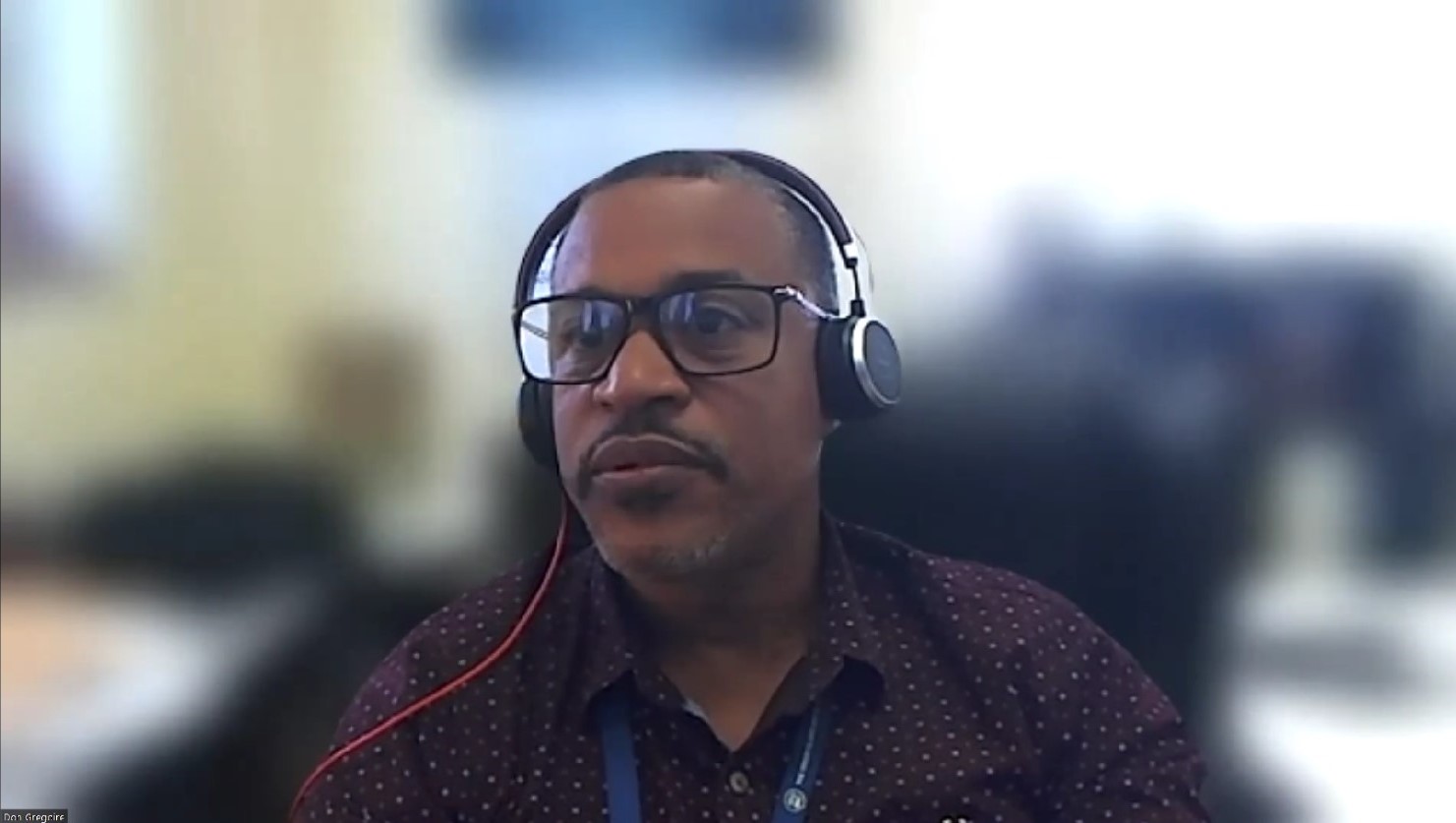
Members of the V.I. Water and Power Authority, Department of Planning and Natural Resources, and the V.I. Health Department met for a virtual town hall meeting on Wednesday to discuss updates on the St. Croix water crisis.
Updates were provided on the Environmental Protection Agency’s sequential water sampling results from November, the authority’s actions to address the red and brown water, and general updates on the authority’s plans to improve overall water quality in the territory.
The meeting, geared towards St. Croix business owners, was hosted by WAPA. The authority said that a meeting will be hosted for the wider community in January. Questions from the audience included the validity of lead testing, voucher eligibility, and sample/test sizing.
“I want the Virgin Islands to be different than Flint, Michigan,” said business owner Austin Moorehead.
In a press release about the event, Andrew Smith, CEO of WAPA, said, “We fully understand the critical importance of providing a safe and clean water supply for our business community.” He added, “Although recent EPA sequential sampling indicated much lower lead levels compared to previous September findings, WAPA remains fully committed to ensuring the water supply meets EPA requirements and to eliminating red and brown water.”
According to a timeline provided by Don Gregoire, director of Water Distribution for St. Croix, initial samples of water were taken on Sept. 28 and 29 by the EPA, DPNR, WAPA, and UVI at the water distribution meters. Out of 66 samples, 36 showed elevated levels of lead. On Oct. 13 the EPA shared the test results and the government issued a “no drinking water advisory.” In November, 119 subsequent samples were taken by the EPA from household kitchen taps, where two indicated higher lead action levels that likely stemmed from plumbing or faucets and stagnant water in the pipes. On Dec. 11, the EPA shared recommendations to WAPA about improving water quality.
“We are taking action on the recommendations from EPA. We are still waiting on the final report, but we are moving forward with recommendations from the EPA at this time,” said Gregoire.
Of the sequential water samples taken from the homes, Gregoire said that “the first set of samples would give you a representation of the plumbing in the home, the next set of samples will give you a representation of what’s in the service line that’s up to the water meter, and then the last set of samples will give you a definitive amount of water coming out from our water base.”
For the third round of sampling, 80 locations will be needed. WAPA is looking for business participants for water sampling. Those interested in participating can email Shanell Petersen, director of communications, for more details at communications@viwapa.vi.
The timeline for completing an investigation of lead service line inventory results by WAPA, as required by the EPA, is October 2024, said Noel Hodge, WAPA’s chief operating officer.
Actions currently being taken by WAPA to mediate the issue include exploratory digging, water sampling from the Alfredo Andrews, John Woodson Junior High, and Educational Complex schools, flushing of fire hydrants, and reviews of their corrosion control program. According to Gregoire, the corrosion control program injects phosphate into the system to prevent leaching onto the brass components.
“We realize our water structure is getting old. It’s failing,” said Gregoire. “Our goal is to bring our system to industry standards. New piping, new storage, new tanks.”
Health Department officials have also conducted blood testing on 1,270 children. Of the blood samples taken, three tested positive for copper and two tested positive for lead.
“Childhood lead exposure can cause neurocognitive deficits, developmental delay, ADHD, kidney toxicity, and anemia, and higher exposures of lead can cause acute encephalitis, seizures, hearing loss, acute kidney injury, vomiting and diarrhea,” said Esther Ellis, territorial epidemiologist. She added that children are at greater risk of exposure and that common sources of lead exposure can include water, paint, soil, car batteries, cookware, imported toys, spices, herbs, fishing weights and sinkers, as well as industrial automotive and marine time occupations.
“The testing that’s being done represents the lead in your body over the last three to four months. And lead accumulates in your bones over time,” said Reuben Malloy, assistant health commissioner.
Harold Mark, environmental program manager at DPNR, indicated that the most recent sample of lead tests showed “3 parts per billion.” According to panelists, lead tests should show less than 0.25 percent lead.
Sampling results can be found on the EPA’s website.
Additionally, according to Gregorie, over 20,000 $100 drinking water vouchers were distributed to customers in November via a $350,000 appropriation provided by the Senate. In total, 52,560 vouchers have been distributed by WAPA.
Petersen shared that, in order to receive a voucher, a resident must have an active water account, be within an impacted neighborhood, and have water usage over the last six months.
For updates on the ongoing crisis, it was encouraged that residents visit Clean Water Action USVI – Brought to you by the Virgin Islands Water and Power Authority for more information.


